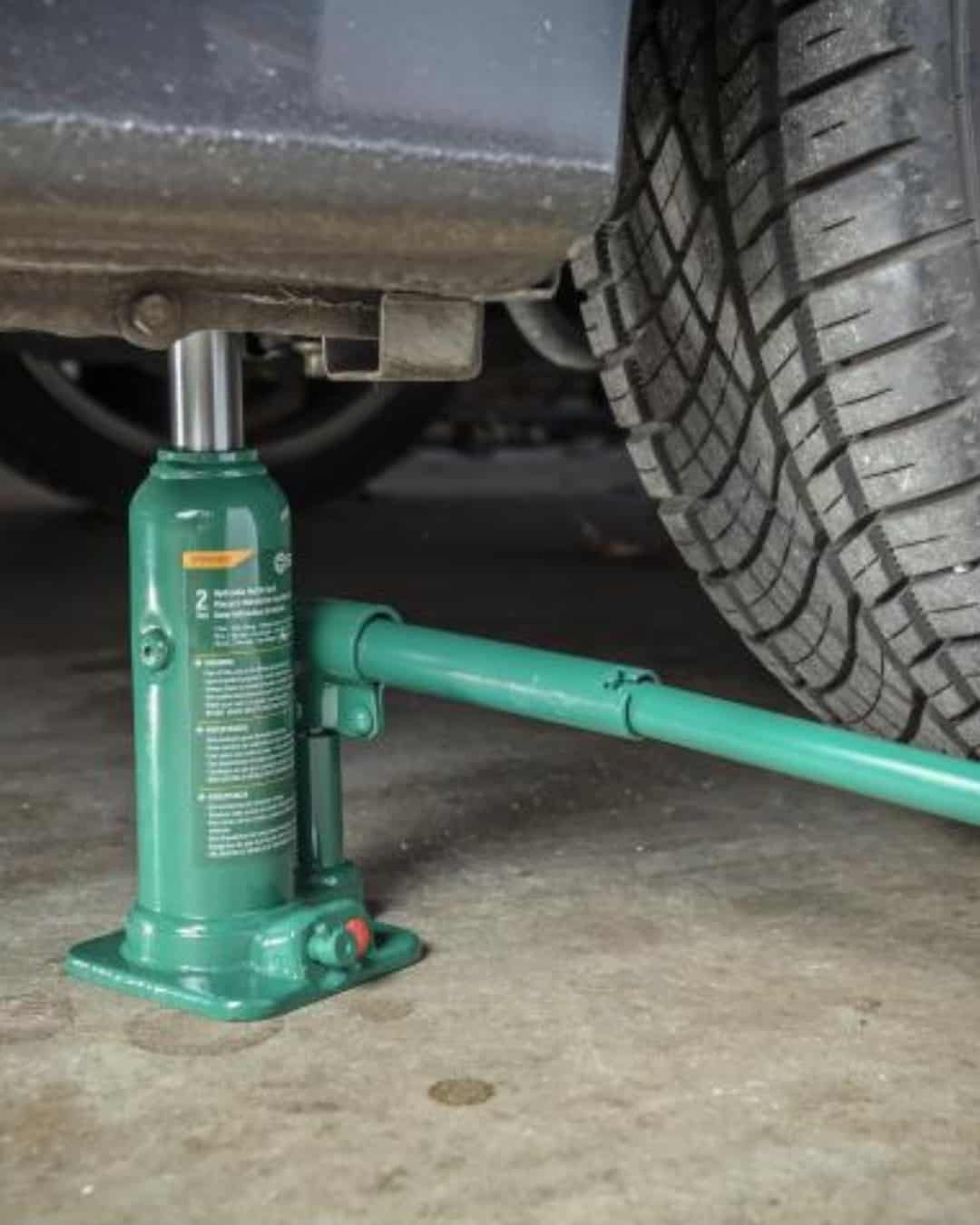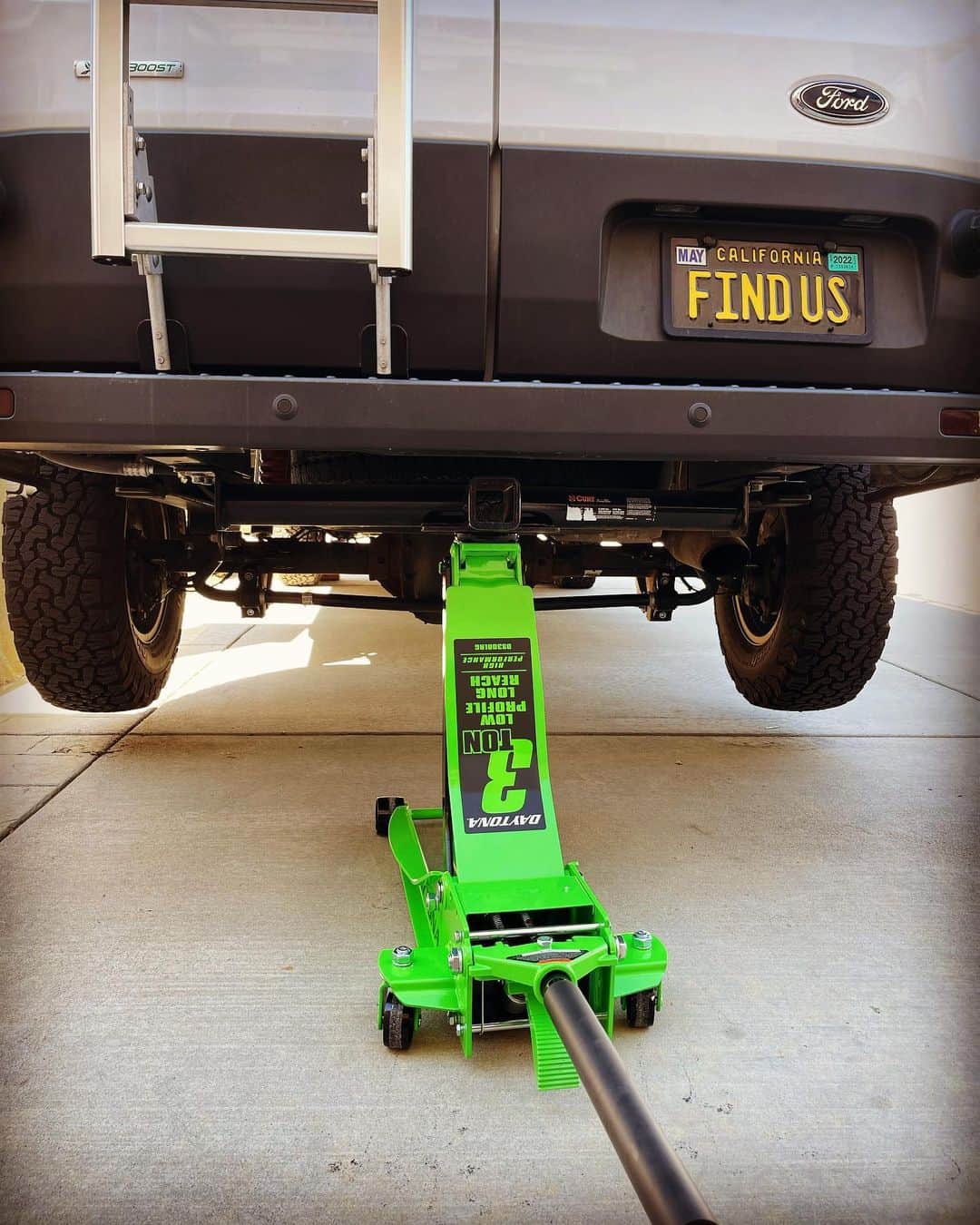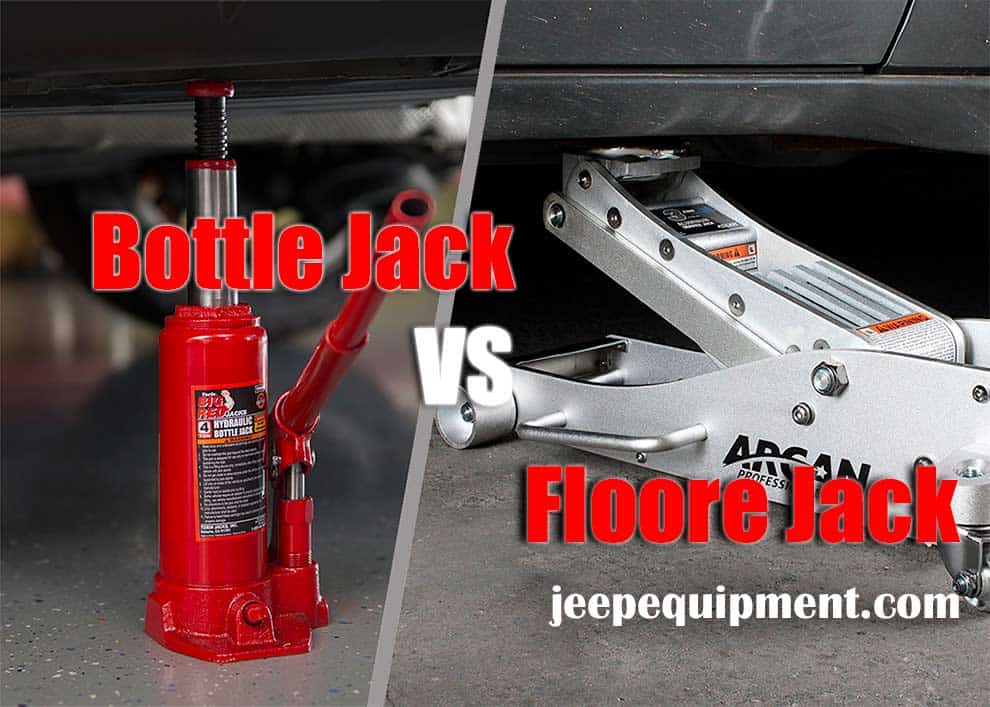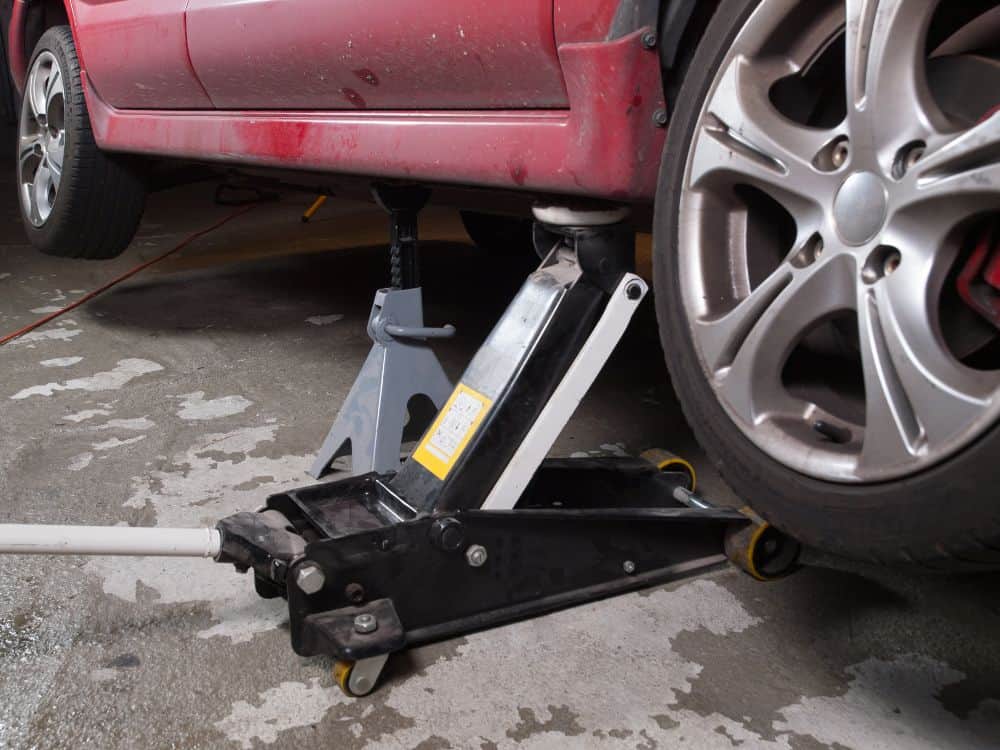Bottle jacks and floor jacks are great tools that make vehicle maintenance easier (and sometimes possible), but this is only true if you choose the right one for your situation.
Bottle jacks are compact, lightweight, and easy to use, but they have a minimum clearance requirement that often limits them to trucks or SUVs. That said, those who can fit one under their smaller vehicle may find a bottle jack the better choice.
Most home garages rely on floor jacks because of their stability and ability to work with lower profiles. They may be more difficult to maneuver and use, but they work with most vehicles and hold up well over time.
The bottle jack versus floor jack debate is either something you care about strongly or something you brush past without a care. Regardless of your opinions, understanding the differences between the two can help you choose the tool best suited for your vehicle and tastes.
Getting your hands on each type is the best way to determine what you prefer, but there are some hard facts that cannot be ignored. In this guide, we explain why these details matter and why different types of jacks exist.
Table of Contents
What is Bottle Jack?

A bottle jack is a hydraulic jack designed to mount vertically underneath your vehicle. This allows the device to handle greater weight and take it to greater heights. While price usually reflects capability, the straightforward bottle jack design is usually cheaper than a floor jack.
Bottle jacks use either air hydraulic systems or oil hydraulic pump systems, and it makes a difference in performance. Many find that the air pumps are easier to use, but they’re more difficult to locate. Oil pump systems are easy to find to buy, but they require a more hands-on approach.
Most truck owners prefer bottle jacks because they don’t need to worry about the higher clearance requirement. Bottle jacks are also small and lightweight enough to stow away in the cab of the truck, so there’s little reason they shouldn’t keep one on hand for emergencies.
What is Floor Jack?

While bottle jacks mount vertically, floor jacks position the hydraulic cylinder horizontally and slide under the vehicle. This allows them to slide under low-profile vehicles with ease.
Floor jacks usually come in three forms:
-
Steel: common in professional repair shops; least expensive, most durable, and heaviest option
-
Aluminum: common for mobility (mobile mechanics, race tracks, roadside assistance); more expensive and less durable, but more lightweight
-
Hybrid: steel on structural components (lift arms/power units) and aluminum on side plates; medium weight and cost
While bottle jacks require more work to reposition, floor jacks roll around on casters and can be moved to a new location in just a few seconds. Despite this, their bulkier size and heavier weight can make them difficult to deal with regularly.
Floor jacks cost more, but they’ll last a lifetime and can handle a wider range of passenger vehicles. This makes them a favorite for both professionals and weekend mechanics.
Bottle Jacks and Floor Jacks Compared
While bottle jacks and floor jacks can both get the job done, they differ in terms of:
-
Jack size
-
Maneuverability
-
Method of use
-
Capacity and lift range
-
Care and maintenance considerations
For some vehicles and situations, the type of jack you have won’t make a difference, but you want to choose the one that makes the most sense for you. Understanding the advantages and disadvantages of each one ensures you make the right decision.
Size
Bottle jacks come in different sizes that affect the amount of clearance you need to install. Most bottle jacks fall in the range of 9 to 18 inches, although some outliers exist. Most bottle jacks weigh between 20 and 30 pounds.
The size of a bottle jack, along with the quality, plays a part in its load capacity and lift range. In general, you need a taller bottle jack for heavier or taller vehicles.
Despite the high clearance, bottle jacks have a narrow frame for easy storage and portability. This means you can take them along with you out on the road, stash them in your truck, and use them as needed, making them a crucial safety device.
Floor jacks are larger overall, but they have a lower profile that makes them well-suited for standard and even low-profile cars. They have a long handle that doesn’t stash away easily, and the average 3-ton jack weighs 70 pounds.
Beyond this, steel floor jacks, which are popular for their low cost and durability, weigh quite a bit more than bottle jacks. They aren’t something you want to drag around for long distances.
Maneuverability
Both kinds of jacks have selling points when it comes to maneuverability.
Bottle jacks are small and lightweight enough that you can carry them to where you need them, set them up, and get on with your work.
Floor jacks are more unwieldy, and you may struggle with the weight or wheels to get them in place, but they’re easier to reposition under the vehicle and you don’t need to position multiple jacks to get the job done.
How to Use

The method of use differs depending on the type of hydraulic jack you use, but they have similar safety requirements.
In general:
-
Wear proper safety gear, including sturdy clothing, work boots, safety goggles, and gloves
-
Inspect your jack(s) and additional gear (jack stands) for missing parts or damage
-
Only use a jack rated to your vehicle’s weight
-
Start on a hard flat surface, and ensure the stability of your jack
The variations in use may make a difference in which one works better for you.
Bottle Jack
Start with your vehicle on a level surface with the parking brake engaged. Chock the wheels on the opposite end of the car to prevent rollback. If you’re getting under your car or intend to leave it up, verify the integrity of your jack stands and have them ready to go.
Place your bottle jack under your verified lift point. Insert the handle in the jack, and pump it until the saddle is close to the lift point. Make small adjustments as needed.
Pump the jack until you have the vehicle off the ground enough to accomplish your task. Take care not to lift it higher than needed to keep the jack as stable as possible.
Floor Jack
As with the bottle jack, start with your vehicle on a flat, clear surface. Engage your parking brake, and chock the vehicles at the other end of the car, and have everything you need on hand.
Locate a suitable lift point on your vehicle for your floor jack to connect, then roll the jack under that point. Pump the handle on the trolley jack until the saddle meets the frame, making small adjustments as needed and ensuring a proper seat as you go.
Continue pumping until the vehicle is high enough to work on, and install your jack stands before you get started.
Capacity and Lift Range
Bottle jacks have a higher load capacity and lift range, but their slender design means you’re better off using multiple bottle jacks for a more intensive task. You find bottle jacks rated anywhere from 2 to 50 tons, and most can lift between 5 and 22 inches.
Keep in mind that this lift range is on top of its original height. A lift range of 5 inches does not mean the jack can work with low ground clearance, and you must also pay attention to the minimum lift height of the jack.
While a 3-ton floor jack is more common, some carry up to 6 tons of pressure fluid. Either way, the average floor jack has a lift range around 22 inches. They may not be suited for heavy loads, but their bottom-heavy form offers greater stability for the same task.
Care and Maintenance Considerations
Care and maintenance for the two jack types are similar but slightly different.
Wipe down floor jacks with a mild soap solution to limit the attraction of dust. While you shouldn’t clean the moving hydraulic components, you should lubricate them to limit wear. This includes moving and bearing surfaces, such as:
-
Caster wheels
-
Front axle
-
Elevator arm
-
Handle base pivot bolts
-
Release mechanism
Check seals for leakage and replace them as needed. You will also need to change the oil every 6 months (or 50 uses).
Keep bottle jacks clean in the same way, and look out for trapped air bubbles in the system. To remove these, place your handle on the release valve and complete two counterclockwise turns. Put the handle in the operating position, then pump 20 times before closing the release valve.
After this, return the handle to the operating position. Pump it until the ram raises all the way, and allow the air to purge from the system completely.
In Conclusion
While bottle jacks and floor jacks can both get the job done, choosing the right one will make your job easier and let you get the most out of your jack.
Choose a bottle jack if you want something that is highly portable, have a heavier vehicle with a higher clearance, or don’t have a lot of room to store your jack. Keep in mind that these are not as stable, but multiple jacks can improve stability.
Floor jacks are a great durable option for low-clearance vehicles and stationary garages. With proper care, a floor jack can provide years of stable load bearing for a wider variety of vehicles you own.
If you’re still unsure which one is better for you, comment with any questions or concerns you have. We’re more than happy to help you decide.
